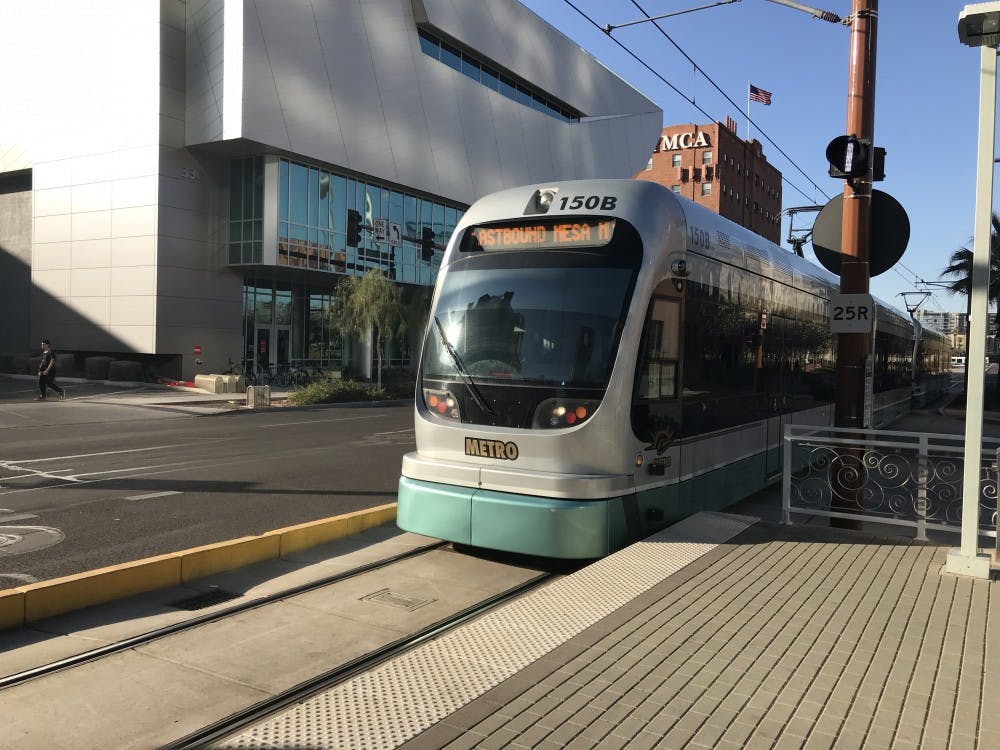Maryvale Village residents, despite some development from the city in 2015, have been left waiting a decade for the implementation of a light-rail extension connecting the area to downtown Phoenix.
The proposition, which would extend the light rail to 79th Avenue and the Interstate 10 north to Desert Sky Mall, was first introduced in the Maryvale Village Core Urban Design plan in 2011 and now sits in limbo with Phoenix City Council, the state and Valley Metro.
"Since the main objective of the plan was to make the area a 'destination,' a place where people would come to, the light-rail extension up to the mall was seen by all the participants as a desired requirement by Valley Metro," said Gene Derie, chair of the Maryvale Village Planning Committee and a participant in the development of the Maryvale Village Core plan. "It made no sense to stop at the I-10 and 79th Ave."
Ten years later, neither the light rail at Desert Sky Mall nor its connecting counterpart from the Capital/I-10 West light-rail expansion project have started construction. The Capitol/I-10 West light rail extension will add 10 miles of light rail service and connect downtown Phoenix to the 79th Avenue Park-and-Ride in Maryvale, according to the latest progress report on Transportation 2050, the city's plan to expand transit systems.
The Capitol/I-10 West project is currently in the beginning stages of design work for Phase One, according to Valley Metro's information page.
The Capitol I-10 Project Fact Sheet explains the project was approved in phases by the Phoenix City Council and the Valley Metro Rail Board in 2016, with the first phase connecting the light rail from downtown to the State Capitol area, and the second phase extending the I-10 until 79th Avenue.
The fact sheet also explains one of the next steps for the project was to consider and analyze the project's extension reaching Desert Sky Mall. It states a recommendation for this consideration from the city of Phoenix should've been expected by the end of 2020, but it was never provided.
Markus Coleman, the city of Phoenix light rail administrator, explained prior to the recommendation going to City Council in December 2020, they received a letter from the state addressing their concerns with some of the design elements.
"At that time, we felt that it would be best to pause moving forward with the City Council, being that the State is one of the biggest stakeholders with our Phase One of the project. We really want to make sure we are working in coordination with them," Coleman said.
The city of Phoenix is currently waiting to coordinate with the state on the project, which has had its "hands full," according to Coleman. Coleman said while there is no specific time frame as to how long this may take, he is hopeful there will be time in early summer 2021 to focus on this and be able to proceed with recommendations.
Coleman said the beginning phases have been on hold for economic reasons as well. He explained a decrease in fare-based revenue due to the pandemic has created concerns for the project's economic security, being that this revenue would be a primary contributor to the funding of the project.
While the light-rail extension is still in the planning stages, other transportation initiatives, especially those involving improving safety in the area, are being studied at the One Square Mile Initiative, which is an initiative through the Watts College of Public Service and Community Solutions and focuses on promoting the sustainability of the Maryvale community.
Watts College Design Studio Director and project leader Erik Cole explained why the initiative will be seeing the Capitol I-10 Project as a priority to sustainability, along with the general reliability of transportation in the area.
"The light-rail extension is an important topic for folks in Maryvale, but so is improved reliability for other forms of public transportation," Cole said. "Also, with so much concern about all pedestrian accidents, improved public transportation and facilities, such as stops and stations, will help with reducing the number of cars on the street in the long-term."
While a discussion between Valley Metro and the One Square Mile Initiative team has yet to occur in terms of contribution or coordination, Cole said he "would love" for a meeting with Valley Metro to talk about this possibility.
Aside from funding, another potential challenge for the light-rail expansion project could be the awareness and support of the project by the community, according to Coleman. Coleman stated while the project feedback has been overall positive, he wants to make sure this is a project "done with the community, not to the community."
Coleman recommended those who want to be involved in the project should sign up to receive email notifications from Valley Metro, so they can join public meetings and provide their opinions during these early stages.
Reach the reporter at Rmprecia@asu.edu and follow @rmprecia on Twitter.
Like The State Press on Facebook and follow @statepress on Twitter.
Continue supporting student journalism and donate to The State Press today.





